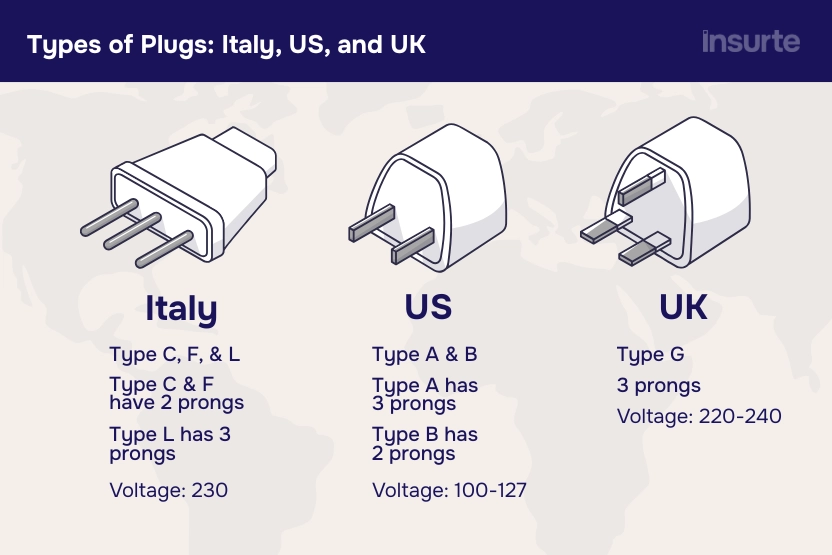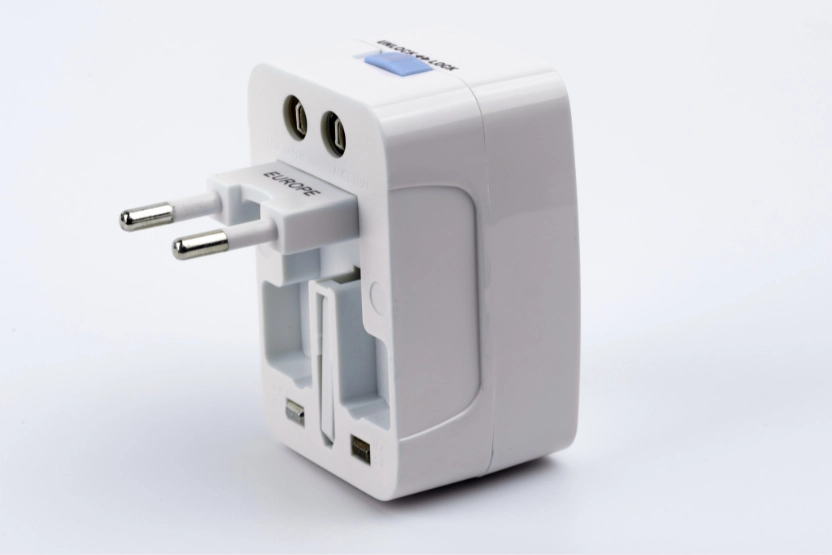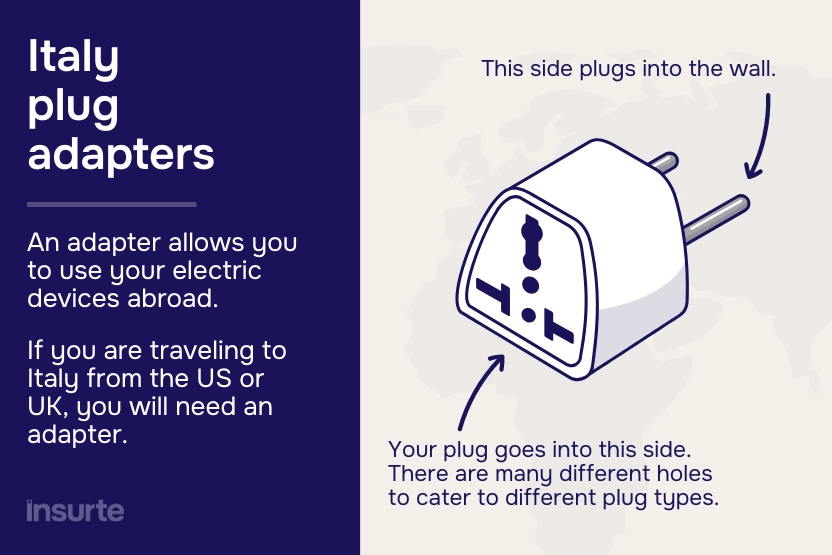Home > Travel Planning > Italy Plug Types in 2026: What Travelers Need
Share this post
Planning a trip to Italy is equal parts exciting and logistical. There are the fun things like deciding what city you're going to spend the most time in and what sites you will see, then there are the more managerial tasks like making sure you know Italy's current entry requirements, and figuring out which travel insurance policy you should go with.
There is one thing that is easy to forget, but could make or break your entire trip abroad, and that is power adapters.
Something so small has the power to do so much - after all, without the correct power adapter for Italy, you won't be able to charge your phone, earbuds, or use your hair tools/other electrical items.
Don't worry, though - getting the right adapter for Italy is easy. In this article, we're going to take a look at what you will need to ensure that you can use all of your devices safely.

The type of plug used in Italy
Whether or not you will need a plug adapter depends on the type of electronics you currently use. If you're visiting Italy from the US, for example, you will need to get an adapter. The same is true for the UK.
If you're visiting Italy from France, on the other hand, you do not need an adapter as French plugs will fit into Italian sockets.
This also means that if you already have a power adapter for France or Spain, you can also use it in Italy!
Italy uses types C, F, and L. L, a bit less common, is pictured in the chart above. You do not have to have all three prongs on your adapter/plug, but you do need to make sure you have the two outermost ones.

Travel power adapters for Italy
Power adapters for Italy are easy to come by. You can often find them at department stores, electronics stores, and online, too.
The most important thing is to make sure that your device's plugs fit into the provided socket and that the plug on the adapter itself is compatible with C, F, and/or L sockets.
This image shows what an appropriate Italy power adapter will look like, though they come in several shapes, sizes, and colors.
It is even possible to find them with USB/USB-C inputs.

If you travel a lot and tend to visit new countries each time, it might also behoove you to get a universal power adapter. While they are clunkier, heavier, and more expensive, you will have many inputs and outputs that pop in and out for countries around the world.
For travelers from the US
If you are traveling to Italy from the US, you will need a power adapter with an input compatible with Type A and B plugs. The plug on the adapter needs to be Type C, F, and/or L.
For travelers from the UK
If you're traveling to Italy from the UK, you will need a power adapter that has inputs for a Type G plug. The plug on the adapter itself needs to be Type C, F, and/or L.
Next stop: Italy?
Protect your journey with Italian travel insurance.
Voltage in Italy
Voltage, in simple terms, is the "push" that propels electricity through the circuit.
While it's easy to assume that everywhere has the same voltage running through its lines, it isn't the case.
Italy runs on 230 volts, so what does this mean for you?
For travelers from the US
The US runs on a lower voltage than most European countries, including Italy.
Typically, between 100-127, American appliances and devices are designed for lower voltages to run through them.
Italian devices are designed for higher voltages (230).
This means that you might need to get a voltage converter (sometimes called a transformer) to use your electronics overseas. If not, you run the risk of your device getting way too hot, or even shorting out, rendering it either broken or completely useless.
Luckily, new phones and laptops usually have built-in voltage converters, which means with a power adapter alone, you can safely use them.
However, most other personal electronics like hair straighteners, blow dryers, and coffee machines do not have built-in voltage converters, so you may want to invest in one in order to use your devices safely.
All of that said, many people use their personal electronics in Europe without a voltage converter, claiming that they function as long as the use isn't long-term. However, that isn't recommended, for safety reasons and so you don't ruin your electronics!
For travelers from the UK
It's a bit of a different story for travelers from the UK.
The voltage in the UK is typically between 220 and 240. Since Italy's voltage is 230, there shouldn't be an issue.
If you have electronics purchased in the United Kingdom, you do not need a voltage converter.
Some countries (like the US) have lower voltage. In that case, a voltage converter is recommended for the safest and most optimal usage.
FAQs about Italy plug types
Related posts
Upcoming travels ? Get Insured !
Find the right insurance for your trip by using our powerful comparison tool!
Sarah Pardi - December 19, 2025
Sarah Pardi - December 12, 2025
Sarah Pardi - December 11, 2025
Sarah Pardi - December 4, 2025





